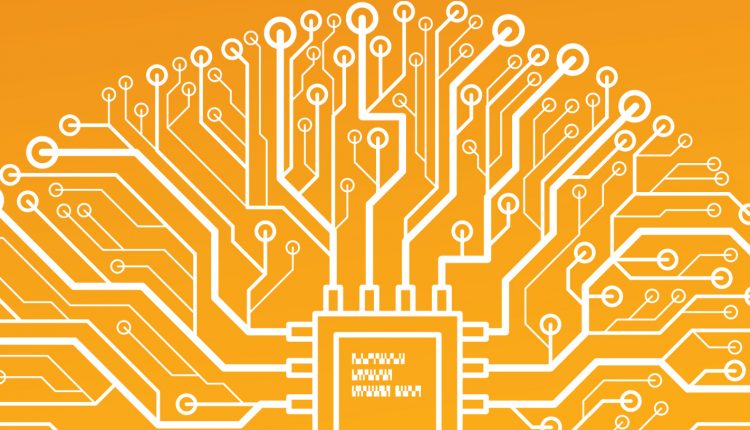01.21.2020
Kofax, a leading supplier of Intelligent Automation software to digitally transform end-to-end business operations, has revealed 10 Intelligent Automation Predictions for 2020 – looking at how Intelligent Automation is poised to transform organizations over the next 12 months. Kofax believes there are reasons for optimism at forward-looking organizations: The opportunity to work like tomorrow – today – is at hand.
“Intelligent automation technologies are primed and available to help companies realize their automation aspirations,” says Dan Kuenzig, Vice President of Strategy for Kofax’s Center of Excellence. “Dreams of automating end-to-end operations can become a reality faster than might be expected, especially as many organizations are ready to implement an integrated Intelligent Automation platform.”
Kofax’s 10 Intelligent Automation predictions for 2020:
1. RPA will mature into Intelligent Automation. Complimentary technologies are making Robotic Process Automation (RPA) smarter and more effective. As customers continue to mature their RPA initiatives in 2020, they’ll require complementary integrated technologies like artificial intelligence (AI), machine learning (ML), process orchestration, capture, optical character recognition (OCR) and advanced analytics to achieve greater business value.
2. Embedded and fit-for-purpose AI will gain prominence. There are huge business benefits for organizations that can successfully deploy AI and ML, but there’s a massive shortage of AI talent. As a result, organizations in 2020 will seek AI-powered Intelligent Automation platforms that embed AI/ML – smartly recognizing people, content and context – reducing complexity, time-to-value and the associated skills burden.
3. Intelligent Automation will mature from creating operational efficiency to creating new value. Operational efficiency will continue to be a main driver for the adoption of automation technologies. But intelligent automation generates added value in other ways too. For instance, even as intelligent automation generates cost savings – take a large North American logistics company as an example, it also helps companies improve the customer experience by making it more cost-effective and efficient for their customers to do business with them.
4. Savvy leaders will put purpose at the center of their Intelligent Automation initiatives. Fear around automation is rising, so organizations need to communicate with purpose. In 2020, leaders need to paint a vision of work that’s appealing to employees. Internally, purpose builds trust so employees can make a shift and paint a vision of a better shared future. Externally, consumers are more connected than ever and demand exceptional experiences from brands: they want a relationship. More companies in 2020 will lead their intelligent automation efforts with purpose.
5. The threat of global recession will accelerate Intelligent Automation adoption. With several leading and lagging market indicators indicating heightened risk, and many respected financial analysts predicting 2020 may usher in a recession, innovative leaders will look to intelligent automation to reduce operating costs and remain competitive in a down market.
6. The rise of digital workforce management. As intelligent automation continues to mature, more enterprises will look for digital workforce management offerings that bring together different capabilities to manage, govern, measure, monitor, scale and orchestrate work between the human and digital workforce.
7. Intelligent automation will extend across the back and front office. In the back office, organizations have been using automation to create operational efficiency for some time. For instance, to reduce or eliminate time-consuming paper-based processes. But more recently, they’re extending automation into the front office as well, opening the door for full-scale, enterprise connectivity.
8. Adaptability Quotient (AQ) will become a new corporate focus. This year the adaptability quotient will gain traction as a measurement for how adaptable an employee is to change. In 2020, organizations will ramp up intelligent automation efforts, including leveraging the digital workforce to free up employees for more creative work and a greater focus on re-skilling. Organizations will prioritize adaptability in their staff and the platforms that support their business in responding to market opportunities.
9. The rise of intelligent process orchestration. Process orchestration is a key component of an Intelligent Automation platform for organizations who want to build and manage a digital workforce that drives business growth and profits. Savvy leaders will continue to prioritize enhancing the customer experience and infusing the enterprise with AI in 2020. They’ll pair intelligent orchestration and robotic process automation with cognitive capture to unlock the value of unstructured data.
10. RPA will continue to adopt more human senses. Robots on their own are “dumb” and don’t adapt to change, but when infused with AI they become more intelligent and can handle more complex work. For example, today’s vision-enabled bots can leverage AI to identify, extract and parse unstructured data such as video, invoices, documents and pictures. When infused with AI, these bots will continue to provide more business value and productivity.
www.kodak.com



Comments are closed.